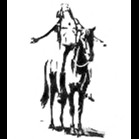lack of spaces between Thai words
-
Recently Browsing 0 members
- No registered users viewing this page.
-
Topics
-
-
Popular Contributors
-
-
Latest posts...
-
86
Fun Quiz > Covid-19 mRNA Vax harm denial - At which stage are you?
The sudden rise in heart attacks and turrbo cancers perhaps.- 1
-

-
5
Report Bangkok Cracks Down on Chinatown Tuk-Tuk Scams
Ok, so that’s this week. But what about next week and the week after that? -
271
My wife wanted me to sign a document any money she gets is hers!
We have nothing like that. Simply a round concrete cover out in the lawn, with a removable plate on the top which my Mrs gets a truck to come about a year to flush it out, stinks somewhat. Tha's it. -
86
Fun Quiz > Covid-19 mRNA Vax harm denial - At which stage are you?
That's one opinion ... certainly not mine. There is NO proof the save lives. As no way to tell if the vaccines helped anyone recover, any better than those unvaccinated. No real way to tell .... IMHO -
149
Pride Month’s Original Message Lost in a Sea of Performative Gestures
Do you not see special events and calibrations and whatnot as promotional? -
11
UPS Asking For B5000 For An Import License For Apple AirPods Bought On eBay
They are probably going to tell you they can't return them.
-
-
Popular in The Pub



.thumb.jpg.d9f3e54432a0ae65f4d5beb0d2d122ce.jpg)



.thumb.jpeg.d2d19a66404642fd9ff62d6262fd153e.jpeg)





Recommended Posts
Create an account or sign in to comment
You need to be a member in order to leave a comment
Create an account
Sign up for a new account in our community. It's easy!
Register a new accountSign in
Already have an account? Sign in here.
Sign In Now